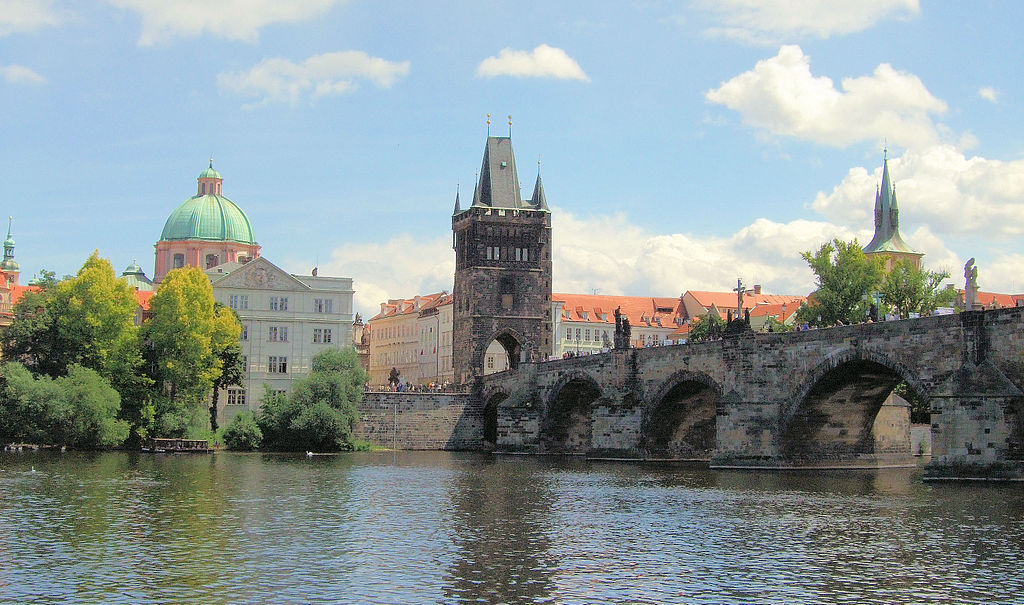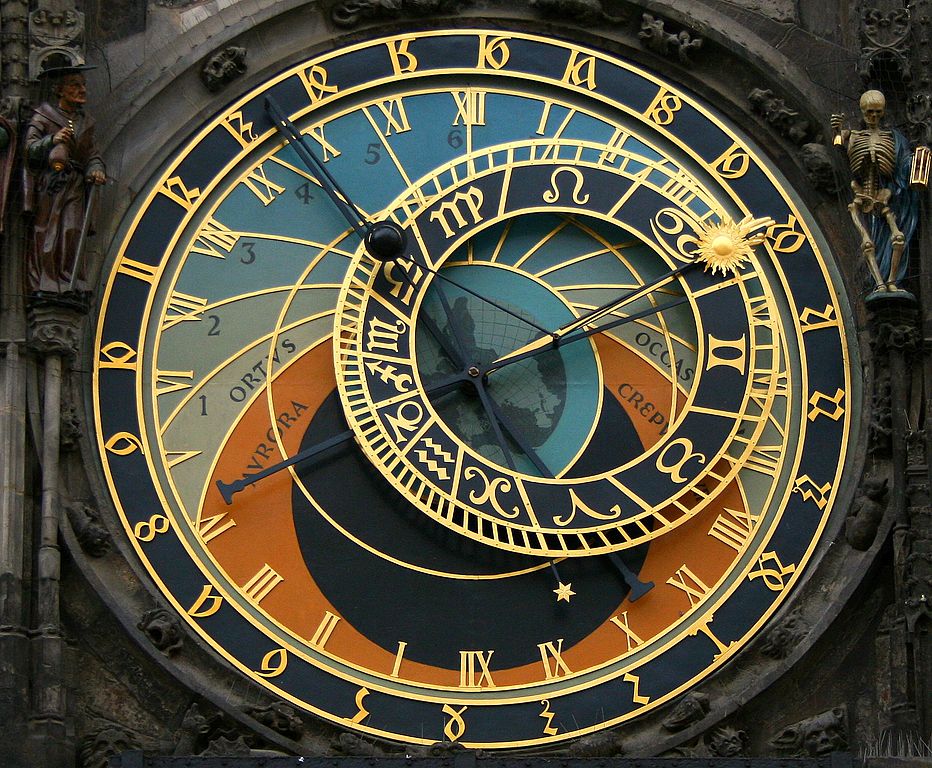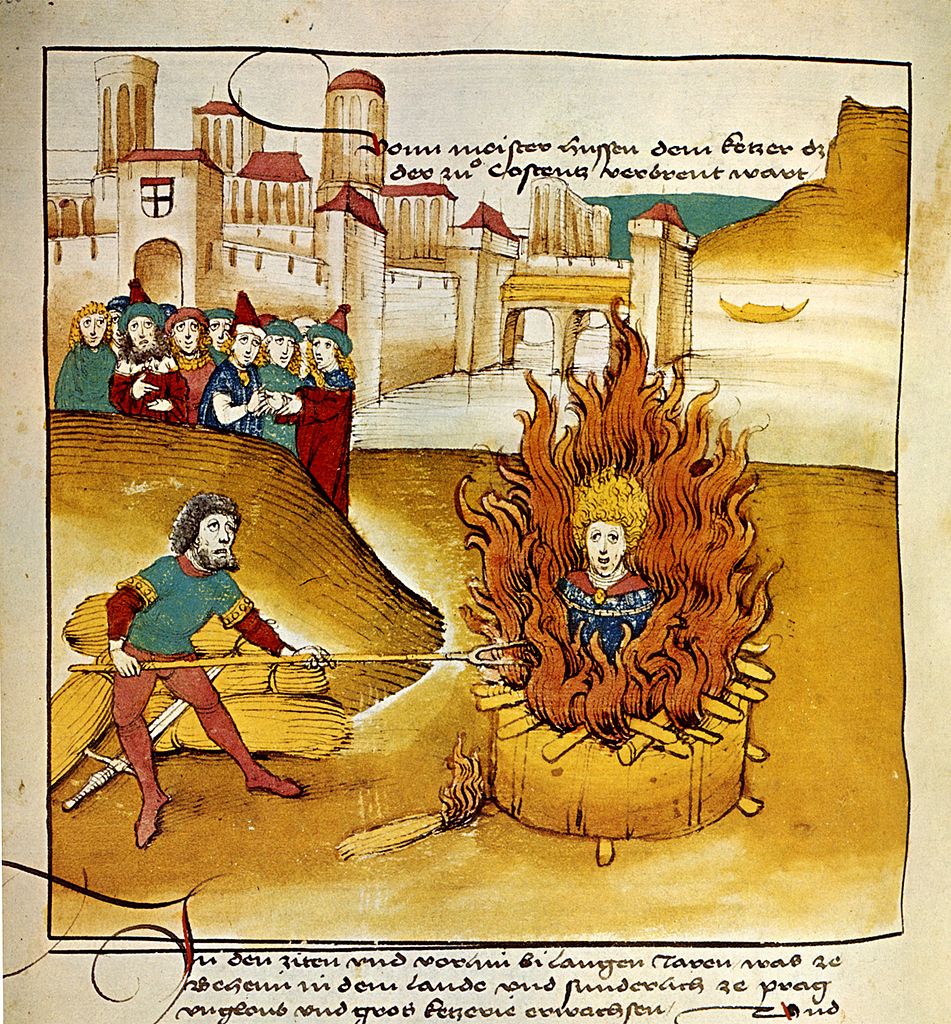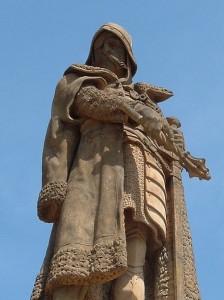Smithsonian Associates Symposium
Dr. Carol Reynolds
Saturday June 15, 2013
Thou art perfect, then, our ship hath touch’d upon the deserts of Bohemia? –William Shakespeare, The Winter’s Tale, act 3, sc. 3

Maps
Prague & Vlatava River, Satellite Photo
Map showing some of the Cities of Interest Outside of Prague
A thousand-year history flows through each word. We do something magnificently old and historic when we speak Czech. –Karel Čapek (1890-1938)

Sites in Prague Featured in Symposium
Old Town Square & the Astronomical Clock
National Museum (National & Folk Art)
Jewish Quarter (Josefov)
- Španělská synagoga (Spanish Synagogue)
- The Pinkas Synagogue
- Maisel Synagogue
- Old Jewish Cemetery
Prague never lets you go . . . this dear little mother has sharp claws . . . one has to give in or else. –Franz Kafka (1883-1924)
Hidden Gems in Prague
Armory Exhibit, Crossbow shooting, Golden Lane (Castle Complex)
Little House of Film Historian Josef Kazda
Loretanska ulitza. Lovely street on the way to Strakhov Monastery & the Loreto with small restaurants, hotels, & great view out the back.
The Loreto. Opulent Pilgrimage Site
Villa “Amerika” (presently the Dvorak Museum)
Sts. Cyril & Methodius Orthodox Church (also hiding place of Parachutists who assassinated Heydrich)
Bertramka (Villa where Mozart lodged with František Dusík)
Kavarna –The Coffee House Scene
- Café Central
- Café Continental
- Café Arco
- Café Slavia
- Café Louvre
- Café Savoy
- Café Français
Vyšehrad & Slavin (cemetery) (Legend of Princess Libuše)
Prague, you fairy tale in stone . . . how well I remember! –Peter Ginz (1928-1944) (written in Terezin)
Art, Architecture, Culinary

Tančící dům Dancing House, or “Fred & Ginger House” (1992). Architect: Frank Gehry. Also here.
Praha Hlavní nádraží. Art Deco Masterpiece—the Prague Central Train Station
Lucerna. Art Deco Gallery with shops & clubs
Obecní dům. The Municipal House
- Smetana Hall (Gorgeous Art-Deco Concert Hall)
- Ivan Lendl & Mucha Poster Collection
Altogether, I think we ought to read only books that bite and sting us. If the book we are reading doesn’t shake us awake like a blow to the skull, why bother reading it in the first place? –Kafka, letter to Oskar Pollack, 1904
Artists Emphasized
Max Švabinský (1873-1962)
Alfons (Alphonse) Mucha (1860-1923). Veletržní palác & the Slavic Epoch.
What we need are books that hit us like a most painful misfortune, like the death of someone we loved more than we love ourselves. –Kafka, Letter to Oskar Pollak, 1904
Food & Drink
Svíčková (cutlet) & houskové knedlíky (bread dumplings)
Kolache (pastry). Also, http://www.chippepedia.org/Kolache
Jablečný kompot (fruit compot-beverage)
Břevnovský klášter. First Prague Brewery, A.D. 933
Becherovka (Karlsbader Becherbitter)
Beyond Prague

Terezín (Theresienstadt). Also here (Jewish Virtual Library).
- Aligator in Town Hall
- Market
- Cabbage Fountain
- Capucin Monastery and Crypt
- Ignis Brunensis Fireworks Festival
- Hussite History & Festival (Hussite Days)
- Statue of Jan Žižka
- St. Barbara’s Cathedral
- Sedlecká kostnice. Sedlec Ossary (nothing like a chandelier made of bones!)
Ceský Krumlov. Unesco Heritage Site.
- Wonderful pictures at http://whc.unesco.org/en/list/617
- Also here is a nice picture of the stage.
- One of the most interesting structures is here.
Karlovy vary (Karlsbad). Grand Spa City
Titles Specially Referenced During the Symposium
Ash, Timothy Garton. The Magic Lantern. Vintage Books, 1990, 1993.
I Never Saw Another Butterfly: Children’s Drawings and Poems from Terezin Concentration Camp 1942-1944. Hana Volavkova, editor. Chaim Potok, Foreword. Vaclav Havel, Afterword. (Schocken, 1994.)
Blind Courage: The Unique Genius of Jan Žižka. DVD. Jerry Griffith, director. 2005.
Suggested Reading
History
Agnew, Hugh. The Czechs and the Lands of the Bohemian Crown. Stanford: Hoover Institution Press, 2004.
Weighty, engaging history with a large section of useful footnotes and citations.
Demetz, Peter. Prague in Black and Gold. Scenes in the Life of a European City. New York: Hill and Wang, 1997.
An insightful, poetic history by a Prague-born scholar whose perspective is fascinating.
Sayer, Derek. The Coasts of Bohemia. A Czech History. Princeton: Princeton University Press, 1988.
Lively history, particularly rich in 20th-century cultural and artistic movements.
Garton Ash, Timothy. The Magic Lantern: The Revolution of ’89 Witnessed in Warsaw, Budapest, Berlin, and Prague. New York: Vintage Books, 1990, 1999.
Concise retelling of the Velvet Revolution, city by city, compiled in 1990 by an Oxford historian who witnessed the events in Prague.
Hupchick, Dennis P. and Cox, Harold. The Palgrave Concise Historical Atlas of Eastern Europe. New York: Palgrave, 2001.
Detailed maps from the Roman times through 1999 showing ethnic distribution, borders shifts, military campaigns, and rise and fall of dynasties.
Personages
Albright, Madeleine. Prague Winter. A Personal Story of Remembrance and War, 1937-1948. New York: Harper, 2012.
Touching, insightful memoir that narrates the historical events and their impact on Albright’s family. Written as both a history and personal testament.
Callum MacDonald. The Killing of Reinhard Heydrich, the SS “Butcher of Prague.” New York: Da Capo Press, 1989.
Detailed examination of the “masterful” killer whose assassination and the subsequent brutal reprisals by the SS form one of the most drastic stories in Czech history.
Dubček, Aleksander and Hochman, Jiri. Hope Dies Last. Tokyo: Kodansha, 1993.
Autobiography of Czech Communist leader whose “Socialism with a Human Face” led ultimately to the invasion of Soviet tanks in 1968.
Pawel, Ernst. The Nightmare of Reason. A Life of Franz Kafka. Toronto: Collins Publishers, 1984.
Fascinating, leisurely biography of Kafka that illuminates the literary, political, and cultural milieu of Prague during Kafka’s lifetime.
Travel
Czech & Slovak Republics. Eyewitness Travel (DK), 2006 with updates.
DK publications are known for their wonderful graphics and beautiful color.
Steves, Rick. Prague and the Czech Republic. Avalon Travel Publishing, 2012.
The present King of Travel whose insights are always welcome and inspiring.
Literature
The Czech Reader. History, Culture, Politics. Durham: Duke University Press, 2010.
Substantial collection of literary excerpts, organized chronologically around significant eras of Czech history.
Nemcova, Bozena. The Grandmother. A Story of Country Life in Bohemia (Chicago: A. C. McClurg & Co, 1892). Reprinted by Cornell University Digital Library. ISBN 9 781112 463242.
Charming novel revered by Czechs for its detailed portrait of a vanishing rural life. The author, Nemcova, is beloved as female literary pioneer.
Wilson, Paul, ed. Prague. A Traveler’s Literary Companion. Berkeley: Whereabouts Press, 1995.
Pocket-sized book, convenient for travel, that includes short stories and excerpts from major authors, including Jan Neruda, Karel Čapek, Gustav Meyrink, Alois Jirásek, and Franz Kafka.
Video Selections
Blind Courage: Unique Courage of Jan Žižka (1999). Directed by Jerry Griffith.
A surprising English-language retelling of the life of this Czech hero.
Bedrich Smetana. The Bartered Bride (Die verkaufte Braut; Prodaná nevěsta) (1982). Adam Fischer conductor, Lucia Popp (Maria), Siegfried Jerusalem (Hans).
A traditionally staged, colorful production of this operatic milestone.
Leoš Janáček. Jenůfa (1989). Andrew Davis, Conductor. Anja Silja (Kostelnička) and Rpberta Alexander (Jenůfa). Glyndebourne Festival Opera production, released 2002.
Wrenching performances that heighten both the darkness and redemption in this work.
The Fireman’s Ball (Horí, má panenko) (1967). Directed by Miloš Forman. The Criterion Collection, 2002.
Great satire and just plain funny. A classic representative of the Czech New Wave when, for a brief time, filmmakers seemingly had carte blanche.
Also
Jan Žižka (1955). Directed by Otakar Vávra.
Closely Watched Trains (Ostře sledované vlaky) (1966). Directed by Jiří Menzel.
